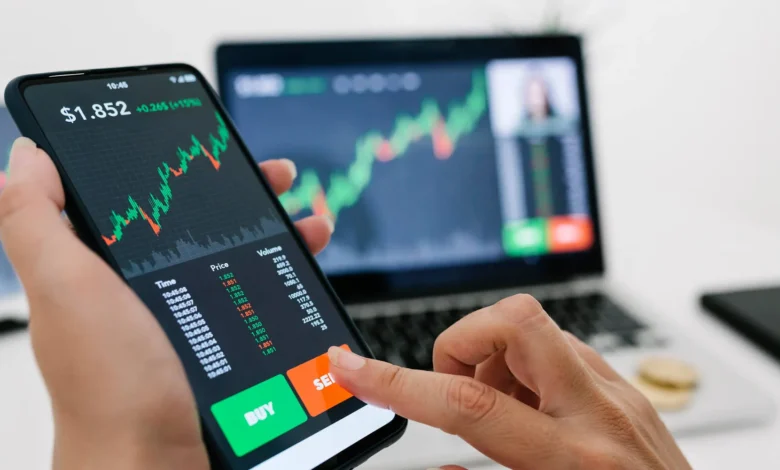fintechzoom.com crypto market cap Explained | Business Vantify

If you’ve ever glanced at a crypto price tracker, you’ve probably seen numbers like “Bitcoin: $1.5 trillion” or “Ethereum: $500 billion” next to something called market capitalization, or market cap. It’s one of the most talked-about metrics in the crypto world, but what does it actually tell you? Is it just a big number to impress or intimidate, or does it hold real weight for investors and enthusiasts? In 2025, with the cryptocurrency market soaring past $2 trillion, understanding market cap is like having a compass in the wild, ever-changing crypto landscape. At Fintechzoom.com, we’re diving deep into what market capitalization means, how it’s calculated, why it’s a big deal, and how you can use it to make smarter decisions in the crypto market.
Table of contents
- What Is Cryptocurrency Market Capitalization?
- How Is Market Cap Calculated?
- Why Market Cap Matters
- Comparing Market Caps: Bitcoin, Ethereum, and Altcoins
- Market Cap vs. Other Metrics
- Using Market Cap for Investment Decisions
- Challenges and Limitations of Market Cap
- Staying Ahead with Market Cap Insights
- Conclusion
- FAQs
What Is Cryptocurrency Market Capitalization?
Market capitalization is a snapshot of a cryptocurrency’s total value at a given moment. It’s calculated by multiplying the current price of a coin by its circulating supply—the number of coins available in the market. For example, if Bitcoin’s price is $80,000 and there are 19 million coins in circulation, its market cap is $1.52 trillion. Simple, right? But this number tells a bigger story. It shows how much the market values a cryptocurrency, giving you a sense of its size, influence, and investor confidence compared to others. In 2025, Bitcoin dominates with over 50% of the total crypto market cap, while Ethereum, Solana, and stablecoins like Tether trail behind, each carving out their slice of the $2 trillion pie.
How Is Market Cap Calculated?
The formula for market cap is straightforward: price times circulating supply. But let’s unpack it. The price comes from exchanges like Binance or Coinbase, reflecting what people are willing to pay at that moment. Circulating supply excludes coins that are locked, burned, or not yet mined—like Bitcoin’s remaining 2 million coins, which won’t be fully available until 2140. For instance, Ethereum’s circulating supply in 2025 is around 120 million, and at $3,500 per coin, its market cap sits at $420 billion. Stablecoins like Tether, pegged to the dollar, have massive circulating supplies—over 100 billion tokens—giving them high market caps despite a $1 price. Knowing how these numbers come together helps you compare apples to apples in the crypto world.
Why Market Cap Matters
Market cap is more than a bragging right; it’s a key indicator of a cryptocurrency’s stability, liquidity, and growth potential. High market cap coins like Bitcoin and Ethereum are seen as “blue-chip” assets—more stable, widely accepted, and less likely to vanish overnight. Bitcoin’s $1.5 trillion market cap in 2025 signals strong investor trust and deep liquidity, meaning you can buy or sell large amounts without crashing the price. Smaller altcoins, like a new token with a $50 million market cap, offer higher growth potential but come with bigger risks—think wild price swings or even project failure. Market cap also reflects market share. Bitcoin’s dominance at 50% means it’s the go-to for most investors, while Ethereum’s 20% shows its grip on DeFi and smart contracts. For investors, market cap is a starting point to balance risk and reward.
Comparing Market Caps: Bitcoin, Ethereum, and Altcoins
In 2025, the crypto market is a diverse landscape, and market cap helps you navigate it. Bitcoin leads with $1.5 trillion, driven by its scarcity and status as digital gold. Ethereum follows at $420 billion, fueled by its role in DeFi and Web3 applications. Stablecoins like Tether and USDC rank high—each over $100 billion—due to their massive circulating supplies and use in transactions. Altcoins like Solana ($80 billion) and Cardano ($20 billion) are rising stars, with Solana’s speed and Cardano’s sustainability drawing attention. Smaller coins, like a new DeFi token at $100 million, can skyrocket 10x but also crash just as fast. X posts often hype low-cap “moon coins,” but data from CoinMarketCap shows 60% of small-cap tokens fail within a year. Comparing market caps helps you weigh established giants against speculative bets.
Market Cap vs. Other Metrics
Market cap isn’t the whole story. It doesn’t account for a coin’s total supply or future issuance—Bitcoin’s cap is fixed, but others, like Ethereum, have no hard limit, which can dilute value over time. Trading volume, another key metric, shows how actively a coin is traded. A high market cap with low volume might signal stagnation, while a low-cap coin with high volume could be a breakout star. Price alone can mislead; a $1 coin with 1 billion in circulation has a bigger market cap than a $1,000 coin with 100,000 coins. Fully diluted market cap, which includes all possible coins, offers a broader view—Dogecoin’s $50 billion market cap looks less impressive against its $500 billion fully diluted cap. Combining market cap with metrics like volume and developer activity gives a fuller picture of a coin’s health.
Using Market Cap for Investment Decisions
For investors, market cap is a guiding star. High-cap coins like Bitcoin are safer bets for long-term holding, offering stability and liquidity—perfect for hedging against inflation. Mid-cap coins, like Solana or Polkadot, balance growth potential with moderate risk, appealing to those chasing innovation. Low-cap coins, under $1 billion, are high-risk, high-reward, often tied to new projects. In 2025, posts on X highlight low-cap DeFi tokens promising 100x returns, but most lack proven track records. A smart strategy? Diversify: allocate 60% to Bitcoin and Ethereum, 30% to mid-caps like Cardano, and 10% to speculative low-caps. Fintechzoom.com’s market cap rankings and analytics tools can help you spot trends and build a balanced portfolio, but always research a project’s fundamentals before diving in.
Challenges and Limitations of Market Cap
Market cap has its blind spots. It can be manipulated—pump-and-dump schemes inflate prices and circulating supply to boost rankings temporarily. It also doesn’t reflect real-world adoption. Tether’s high market cap comes from transaction volume, not investment hype, while a low-cap coin might have a loyal user base but little market visibility. Volatility affects accuracy; a 20% price drop, like Bitcoin’s in March 2025, can slash market cap overnight. Regulatory changes, such as the U.S. Clarity Act, can shift investor confidence, impacting caps across the board. To counter these limitations, cross-reference market cap with on-chain data, like transaction counts, and community sentiment on platforms like X.
Staying Ahead with Market Cap Insights
To navigate the crypto market, track market cap trends using tools like CoinMarketCap or Fintechzoom.com’s real-time rankings. Watch for shifts in dominance—Bitcoin’s drop below 50% in 2024 signaled altcoin growth. Follow news for events like halvings or ETF approvals that move market caps. Engage with X communities to gauge hype but verify with data to avoid scams. For example, a sudden spike in a low-cap coin’s ranking might signal a pump, not genuine growth. By combining market cap with other metrics and staying informed, you can make decisions that align with your goals, whether you’re a cautious investor or a risk-taking trader.
Conclusion
Cryptocurrency market capitalization is your window into the crypto world’s size, stability, and potential. In 2025, with the market topping $2 trillion, understanding market cap helps you compare Bitcoin’s dominance to Solana’s rise or a new token’s gamble. It’s not perfect—volatility and manipulation can skew it—but paired with other metrics, it’s a powerful tool for investors and enthusiasts. Fintechzoom.com offers real-time market cap data, rankings, and insights to guide your journey. Dive into the market with clarity, stay curious, and let market cap light the way to smarter crypto decisions.
FAQs
What does cryptocurrency market cap tell you?
Market cap shows a cryptocurrency’s total value by multiplying its price by circulating supply. It reflects size, investor confidence, and stability, helping you compare coins like Bitcoin ($1.5 trillion) to smaller altcoins.
Why is Bitcoin’s market cap so high in 2025?
Bitcoin’s $1.5 trillion market cap comes from its $80,000 price and 19 million circulating supply, driven by scarcity, institutional adoption, and its status as a trusted store of value.
Should I only invest in high market cap coins?
High-cap coins like Bitcoin are safer and more liquid, but mid- and low-cap coins offer growth potential. Diversify across market caps and use Fintechzoom.com to research before investing.
Can market cap be manipulated?
Yes, pump-and-dump schemes can inflate prices or supply to boost market cap temporarily. Check trading volume and on-chain data to spot genuine growth versus manipulation.
How does market cap differ from fully diluted market cap?
Market cap uses circulating supply, while fully diluted includes all possible coins. A coin like Dogecoin may have a $50 billion market cap but a $500 billion diluted cap, showing future dilution risk.
Where can I track crypto market cap in 2025?
Use Fintechzoom.com or CoinMarketCap for real-time market cap rankings and trends. Follow X for sentiment but verify with data to make informed investment choices.





